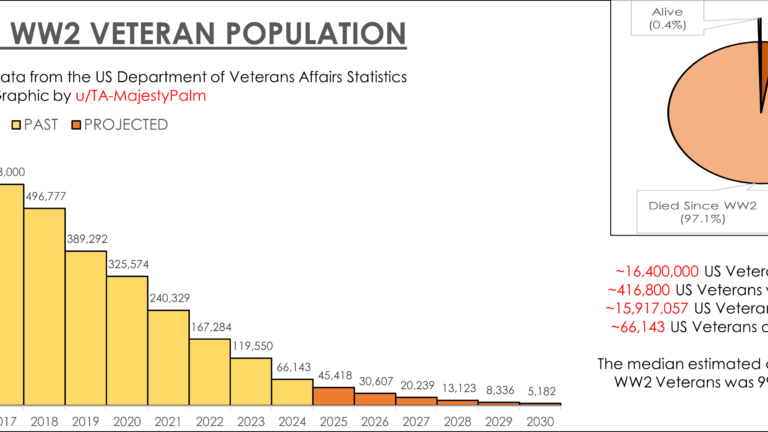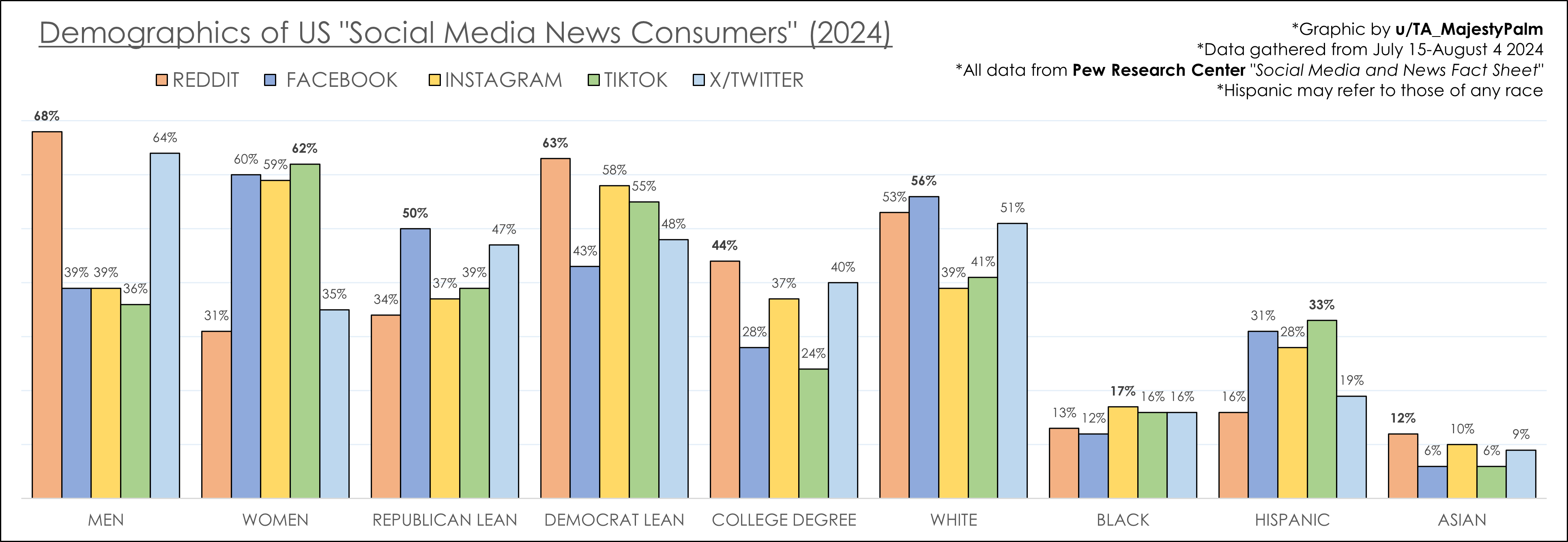Did you know that only 0.4% of the original 16 million Americans who served in World War II are still alive today?
This striking reality highlights the urgent need to document and preserve their stories.
As of 2023, the number of surviving World War II veterans in the U.S. has dwindled to approximately 66,143, and by 2030, it's projected that only 5,182 will remain.
Understanding the current US World War 2 veteran population statistics provides insight into the changes and challenges faced by this dwindling group.
Let's delve deeper into the dwindling numbers and the implications for the future of these cherished veterans.
Current US World War 2 Veteran Population Statistics
As of 2023, the US World War 2 veteran population has dwindled significantly from the original 16 million who served. Time has taken its toll, with the numbers decreasing drastically over the decades. The surviving WWII veterans are now an aging group, with projections indicating that by 2024, only 66,143 veterans will remain. This decline is a stark reminder of the passage of time and the inevitable aging of those who once bravely served during the war. By 2030, the number is expected to shrink further to a mere 5,182.
The veteran population trends highlight a continuous decline, reflecting the natural aging process and the historical context of the war. The following table details the estimated number of living veterans from 2015 to 2030. It offers a clear picture of the rapid decrease in numbers, underscoring the urgency of preserving the stories and experiences of these veterans for future generations.
| Year | Estimated Living Veterans |
|——|—————————|
| 2015 | 939,000 |
| 2020 | 300,000 |
| 2024 | 66,143 |
| 2030 | 5,182 |
The table illustrates the sharp reduction in veteran numbers over a relatively short period. As these surviving WWII veterans continue to age, the importance of acknowledging and honoring their contributions becomes ever more critical. The dwindling numbers emphasize the need to capture their stories and preserve their legacy, ensuring that future generations understand the sacrifices made during one of history's most significant conflicts.
Demographics of Aging World War 2 Veterans
What is the projected median age of surviving World War 2 veterans by 2024? The median age is projected to be 99 years. This statistic highlights the advanced age of this population, emphasizing the urgency in addressing their unique needs. As these veterans approach the centenarian mark, their health and social support requirements become increasingly critical. This age distribution is a testament to the longevity of those who served during a pivotal moment in history, yet it also underscores the challenges faced by this aging group.
How has the racial and ethnic composition of World War 2 veterans changed over time? As of 2022, 74.2% of veterans identified as white, 12.4% as Black, and 8.6% as Hispanic or Latino. These figures illustrate the diverse backgrounds of individuals who served during World War 2. The changing racial and ethnic composition reflects broader demographic shifts within the United States. This diversity is vital to consider when discussing the history and legacy of World War 2 veterans, as it showcases the varied experiences and contributions of those who served.
Over the years, how have the demographics of World War 2 veterans evolved? The demographic evolution reflects broader societal changes, with increasing racial and ethnic diversity among veterans. Initially, the majority of World War 2 veterans were white, mirroring the racial composition of the U.S. military at the time. However, as the decades have passed, there has been a noticeable shift towards greater diversity. This evolution highlights the importance of recognizing the contributions of all racial and ethnic groups within the veteran community.
- Projected median age by 2024: 99 years
- Racial composition as of 2022: 74.2% white, 12.4% Black, 8.6% Hispanic or Latino
- Increasing diversity: Reflects broader societal changes
Geographical Distribution of World War 2 Veterans in the US
Where are the highest percentages of World War 2 veterans aged 85 and older located? Oregon leads with 10.0%, followed closely by Utah with 9.9%. These two states have the most significant shares of aging veterans, highlighting regional variations in veteran demographics. The concentration of older veterans in these areas may be attributed to factors such as historical migration patterns, local veteran services, and community support systems that cater to the needs of aging veterans. Understanding these geographical distributions is crucial for developing targeted support programs and services.
Beyond Oregon and Utah, several other states also have notable concentrations of World War 2 veterans. Maine, Montana, New Hampshire, and Idaho are among those with significant shares of veterans aged 85 and older. This distribution reflects not only the aging process but also the historical settlement patterns of veterans post-war. It is essential for policymakers and veteran organizations to consider these regional demographics when planning healthcare and support services to ensure that the needs of these veterans are adequately met.
- Oregon: 10.0%
- Utah: 9.9%
- Maine: Significant share
- Montana: Significant share
- New Hampshire: Significant share
| State | WWII Veteran Share (%) |
|———–|————————|
| Oregon | 10.0 |
| Utah | 9.9 |
| Maine | Notable |
| Montana | Notable |
| New Hampshire | Notable |
| Idaho | Notable |
Healthcare and Support Services for Aging World War 2 Veterans
What are the primary healthcare challenges faced by aging World War 2 veterans? The main challenges include geriatric care, chronic disease management, and mobility assistance. As these veterans age, their healthcare needs become increasingly complex. Geriatric care is essential to address the unique health concerns associated with aging, such as cognitive decline and frailty. Chronic disease management is critical, as many veterans suffer from conditions like heart disease, diabetes, and arthritis. Mobility assistance is vital due to the physical limitations that often accompany advanced age, requiring specialized support to maintain independence and quality of life.
In addition to healthcare, what support services are available to World War 2 veterans? Support services include home-based care, mental health resources, and veteran-specific community programs. Home-based care provides personalized medical assistance within the comfort of their homes, which is particularly beneficial for those with limited mobility. Mental health resources cater to the psychological needs of veterans, addressing issues such as PTSD and depression. Community programs offer social engagement opportunities and support networks that are crucial for maintaining emotional well-being. These services not only address immediate healthcare needs but also play a pivotal role in preserving the stories and legacies of these veterans for future generations.
- Home-based care: Personalized medical assistance at home
- Mental health resources: Support for PTSD and depression
- Community programs: Social engagement and support networks
Historical Significance and Legacy of World War 2 Veterans
What was the scale of American involvement in World War II? Approximately 16 million Americans served in the armed forces during the war. This immense mobilization effort was crucial in the Allies' victory and showcased the United States' ability to unite and respond to global threats. The contributions of these veterans were not just limited to the battlefield; they played a pivotal role in shaping post-war America, influencing social, economic, and political landscapes. Their experiences and sacrifices laid the foundation for the United States' emergence as a superpower in the latter half of the 20th century.
Why is it important to preserve the stories of World War 2 veterans? The number of surviving veterans has declined significantly due to aging and time. This decline underscores the urgency in capturing their firsthand accounts before they are lost to history. These stories provide invaluable insights into the realities of war and the resilience of the human spirit. They serve as powerful reminders of the sacrifices made to secure freedom and democracy. Preserving their heritage ensures that future generations understand and appreciate the profound impact these veterans had on both national and global scales.
- The National WWII Museum: Dedicated to preserving and educating about World War II history.
- The Veterans History Project: Collects and archives personal accounts of American war veterans.
- Honor Flight Network: Transports veterans to Washington, D.C., to visit memorials dedicated to their service.
Final Words
In examining the US World War 2 veteran population statistics, it's clear that the numbers have dwindled from the original 16 million to a mere 66,143 projected by 2024.
This decline underlines the urgency of preserving their stories and legacies.
Demographically, we see an aging population primarily represented by veterans who identify as white, with evolving racial and ethnic compositions.
Geographically, states like Oregon and Utah have the highest percentages of veterans within the 85-and-over bracket.
Healthcare needs, including geriatric care and chronic disease management, become increasingly vital as these veterans age.
Support networks are crucial to ensuring that their experiences and sacrifices continue to be honored and remembered.
Overall, recognizing and acknowledging the historical significance of WWII veterans helps keep alive their legacy and contributions to the nation's history.
Let's continue to honor their stories and ensure that future generations appreciate the pivotal role these veterans played in shaping today's world.



